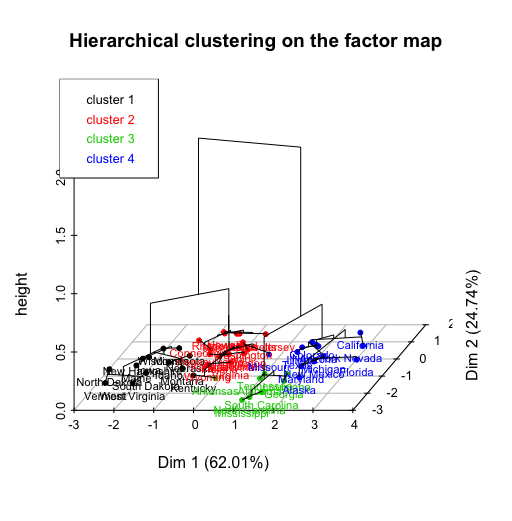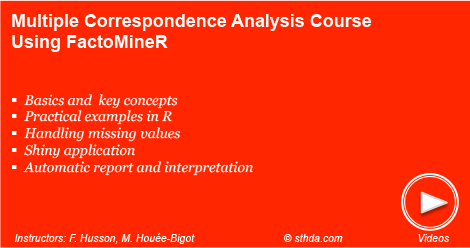This page presents a hand-curated list of
courses on
principal component methods by the experts. Principal component methods are used to summarize and visualize a multivariate data set containing a large number of variables.
Depending on the type of variables (categorical or quantitative) in the data set, you should apply a specific principal component method. This course presents the 5 essential principal component methods and clustering.

1)
Principal Component Analysis (PCA)
PCA is used to analyze data sets containing quantitative variables.
2)
Correspondence Analysis (CA)
CA is used to analyze a contingency table formed by two categorical variables.
3)
Multiple Correspondence Analysis (MCA)
MCA is used to analyze data sets containing qualitative variables; for example: survey data.
4)
Factor Analysis of Mixed Data (FAMD)
FAMD is use to analyze data sets containing a mix of both quantitative and qualitaive variables.
5)
Multiple Factor Analysis (MFA)
MFA is used to analyze a complex data table in which individuals are described by several sets of variables (quantitative and /or qualitative) structured into groups.
6)
HCPC: Hierarchical Clustering on Principal Components
The HCPC method is used to combine principal component methods (PCA, CA, MCA, FAMD, MFA) and clustering methods ( hierarchical clustering and k-means clustering). This is helpful, for example, when you want to perform clustering on categorical variable. In this case, you first need to compute (M)CA on your data set. Next you can compute clustering on the (M)CA results using the HCPC algorithm.
7) See also: Factoextra R Package:
Easy Multivariate Data Analyses and Elegant Visualization












